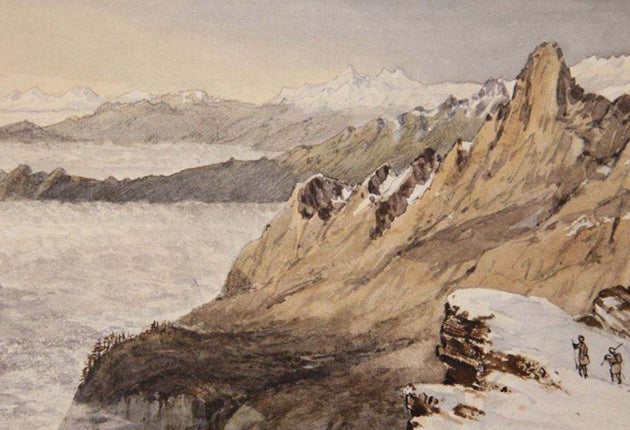How Darwin's friend gave West its first view of Mount Everest

Your support helps us to tell the story
From reproductive rights to climate change to Big Tech, The Independent is on the ground when the story is developing. Whether it's investigating the financials of Elon Musk's pro-Trump PAC or producing our latest documentary, 'The A Word', which shines a light on the American women fighting for reproductive rights, we know how important it is to parse out the facts from the messaging.
At such a critical moment in US history, we need reporters on the ground. Your donation allows us to keep sending journalists to speak to both sides of the story.
The Independent is trusted by Americans across the entire political spectrum. And unlike many other quality news outlets, we choose not to lock Americans out of our reporting and analysis with paywalls. We believe quality journalism should be available to everyone, paid for by those who can afford it.
Your support makes all the difference.Joseph Dalton Hooker, renowned botanist, close friend of Charles Darwin and global explorer, also produced the earliest Western sketch of a little-known geologic feature called Mount Everest, it emerged this week.
The Royal Botanic Gardens at Kew, where Hooker was director in the late 19th-century, has identified a rough sketch by Hooker of the Himalayan mountain, the highest point on Earth, as one of the first of its kind. A consultation with Hooker experts, including the Royal Geographical Society (RGS), suggests the drawing is the earliest known scientific Western drawing of what locals call Mount Chomolungma. The work dates from 1848, completed while Hooker, aged 30, was conducting a three-year-long research expedition of the Himalayan region. The RGS named Everest in 1856 after George Everest, a former British surveyor-general of India.
"It is always wonderful when we turn up a hidden gem of such historical importance," said Kew's director Stephen Hopper. "To our knowledge there are no other earlier representations of Everest by a European, in which case this discovery could be one of the most important findings in Kew's Archive."
While the RGS has a French map of the relevant Himalayan region dating from the 1730s, it has no pictorial representations of the mountain from this period.
Kew were first alerted to the sketch's importance by documentary filmmaker Peter Donaldson, who has spent several years researching Hooker's life. In 2008, he retraced Hooker's 1848 journey through eastern Nepal and the Tibetan border, which Mr Donaldson claims was the first recreation of its kind. "Hooker's various explorations around the world and on the spot drawings provide a very interesting reference point to see how parts of the eastern Himalayas and elsewhere have changed over the last 160 years," Mr Donaldson said in an email. "Hooker established much of the science underlying current understanding of how plants change with changing climate. This is of great importance in interpreting the past and future effects of climate change."
The garden's archives also contain a watercolour by Walter Hood Fitch, based on the Hooker sketch, which was created in about 1850. While the botanist does not refer directly to the drawing in his journals, he describes a spectacular sunset seen during his four-year expedition. "I have never before or since seen anything which for sublimity, beauty and marvellous effects, could compare with what I gazed on that evening." Everest is marked on Hooker's sketch "very high snows NNW ".
As well as being the first European to collect plants in the Himalayas, Hooker also worked with Darwin to classify plants he had collected in the Galapagos Islands.
Hooker's sketch is currently on display at Kew's Shirley Sherwood Gallery of Botanical Art until 1 June.
Join our commenting forum
Join thought-provoking conversations, follow other Independent readers and see their replies
Comments